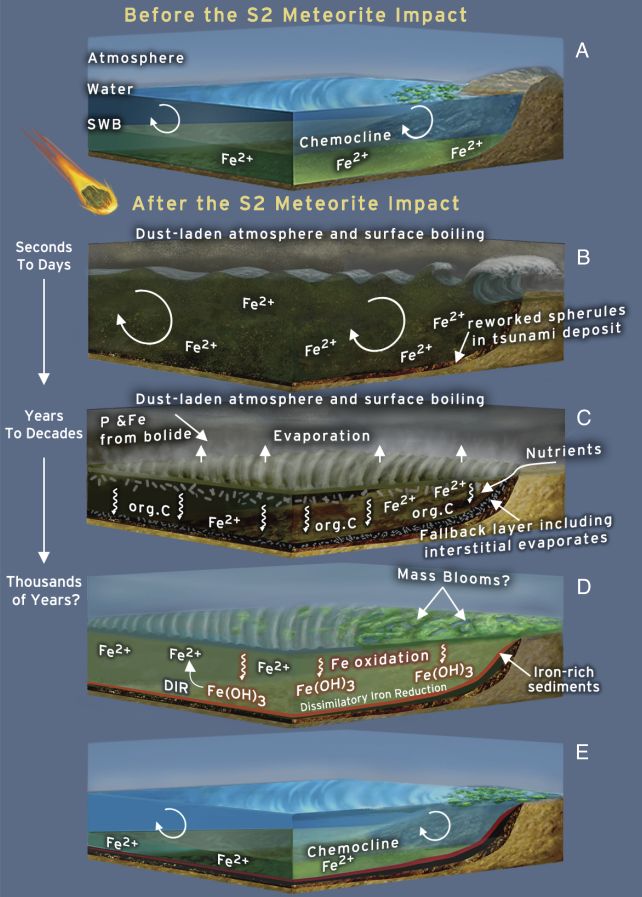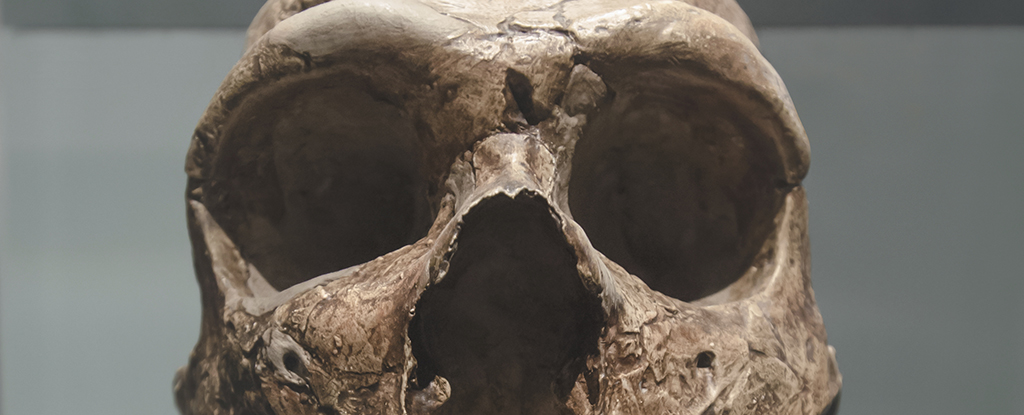Meteorites have a pretty bad reputation. The most recent major impact with our planet was – to be fair – pretty devastating, wiping out a good three-quarters of all animal species on the planet.
But a much, much larger impactor, much longer ago, may have had the opposite effect.
Some 3.26 billion years ago a giant rock between 50 and 200 times the size of the Chicxulub dino-killer smacked into our planet. According to a team led by geologist Nadja Drabon of Harvard University, the upheaval resulting from this gobsmackingly-colossal impact would have churned up nutrients that gave a select few early microbes a boost.
“Picture yourself standing off the coast of Cape Cod, in a shelf of shallow water,” Drabon says. “It’s a low-energy environment, without strong currents. Then all of a sudden, you have a giant tsunami, sweeping by and ripping up the sea floor.”
We don’t know, firsthand, what a giant meteorite impact does to our planet. That’s a good thing, overall. But we are able to model and simulate what happens, reconstructing events based on mineral deposition in the geological record.
A formation known as the Barberton Greenstone Belt in South Africa contains evidence of a giant impact that shook Earth 3.26 billion years ago, an event known as S2. Drabon and her colleagues performed a painstaking characterization of the minerals in the S2 rock layer, and devised a reconstruction of the sequence of events that followed.
It still would have been pretty devastating. The heat from the collision would have boiled off the top layer of the ocean, while the impact itself is predicted to have sprayed dust and debris into the atmosphere, creating a thick haze that blocked the sunlight and stymied photosynthetic microbes living in shallow waters.
There also would have been a huge tsunami that dredged the ocean floor, bringing material usually sequestered in the depths to the surface.
Although this would have harmed many of the burgeoning life forms that had been eking out an existence for just a few hundred million years at this point, it would have been a boon to some.
The meteorite itself would delivered a burst of phosphorus, for example, while the waters dredged up from the seafloor would have been rich in iron. Both elements would have fed any microbes capable of metabolizing them, causing a brief, but significant, spike in their numbers before Earth settled back down into a more stable existence. This would especially have been true for iron-metabolizing microbial blooms in shallow waters.
“We think of impact events as being disastrous for life, but what this study is highlighting is that these impacts would have had benefits to life, especially early on,” Drabon says. “These impacts might have actually allowed life to flourish.”

It would be more than 2.5 billion years before multicellular organisms would emerge, introducing their own significant changes to Earth’s biosphere. And dinosaurs didn’t appear until about 250 million years ago, give or take, reigning until the Chicxulub meteorite triggered the Cretaceous-Paleogene extinction 66 million years ago.
Even that devastating impact – the only meteorite we’ve confidently linked to an extinction event – opened new avenues for life to thrive. With the decline of the non-avian dinosaurs, mammals rose to fill the vacated ecological niches; without that devastation, it’s possible that humanity would never have emerged.
So, while it is true that a massive meteorite impact has significant deleterious effects for some organisms, it can benefit others in unexpected ways. In fact, it’s entirely possible that repeated early impacts altered Earth in ways that primed it for the evolutionary explosions that would follow.
“Our work suggests that on a global scale, early life may have benefitted from an influx of nutrients and electron donors, as well as new environments, as a result of major impact events,” the researchers write.
They plan to study the Barberton Greenstone Belt further, to try to piece together this mysterious, but possibly crucial, period in the history of life on Earth.
The research has been published in the Proceedings of the National Academy of Sciences.





